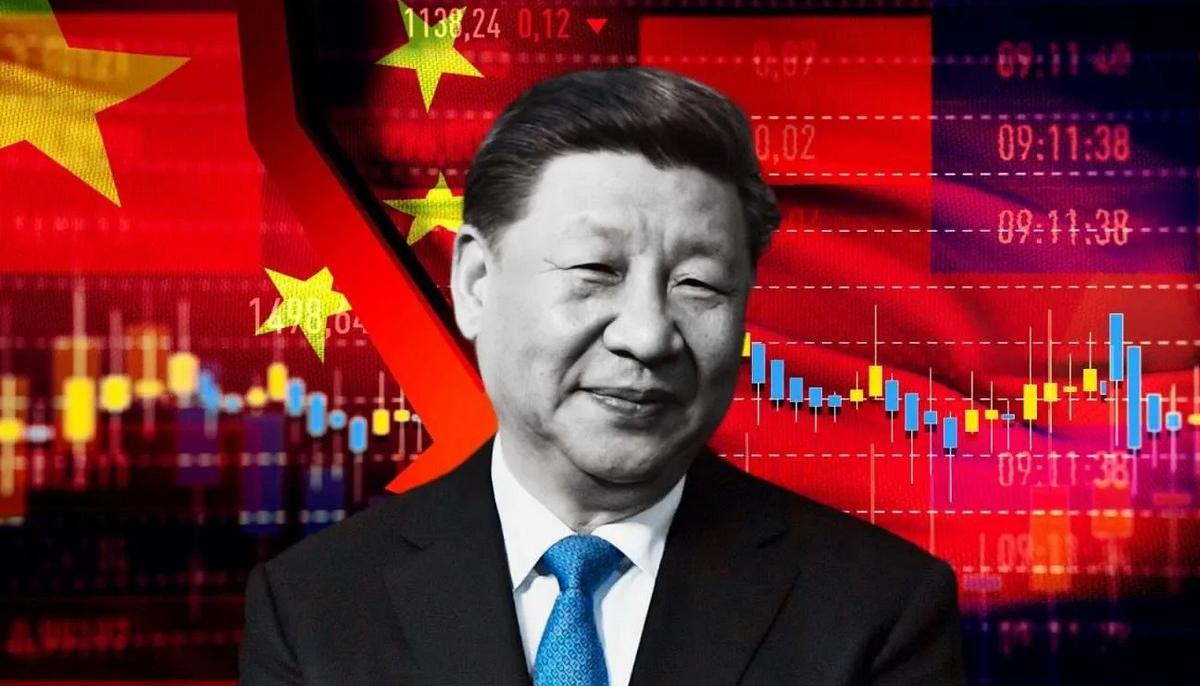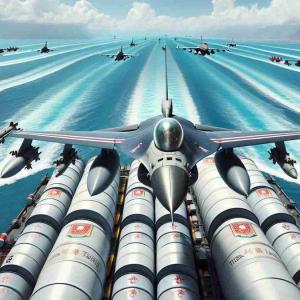China's economy has been the miracle of recent decades. With an annual GDP growth of around 10% (until 2011), China was positioning itself as the world's future dominant economic power. Many economists and international relations experts predicted that China would overtake the US in terms of GDP. 2020, 2025 or 2030 were, in turn, the years circulated for this symbolic moment.
Now, this global economic trophy ring seems farther and farther away. So is the memory of China's miraculous economic growth in the 2000s, which risks missing even the Chinese Communist Party's 5% GDP growth target in 2024. All over the world, the Chinese economy is under scrutiny in the hope of preventing a possible global "contagion".
The problem of the Asian super economy is not only economic stagnation, but also a crisis in the real estate sector, the increase in public debt, unemployment, as well as problems generated by a low level of consumption.
Aware of the dangers - economic and political alike - the Chinese government launched, at the end of September, an aggressive economic stimulus package, a move received with great enthusiasm on the stock markets.
What is happening to the Chinese economy and what is behind the international anxiety?
The state of the Chinese economy
The growth of the Chinese economy was made possible by Deng Xiaoping's economic reforms, which began in 1978. This momentum was supported by China's cheap and numerous workforce, combined with a capitalist economic system, but marked by intense state involvement in the market .
The privatization of certain Chinese companies, the establishment of special economic zones, the creation of important production centers for large Western companies and, at the same time, the preservation of a communist political leadership created a new economic model, in which economic capitalism and political communism could coexist.
Joining the World Trade Organization in 2001 opened new commercial doors for China, as well as international recognition, contributing to economic growth through the explosion of exports.
The price of the pandemic
Even though possible economic problems were predicted in China even before 2020, the Covid-19 pandemic was the moment when they started to be visible. Maintaining the "zero Covid" strategy for almost three years led not only to reduced consumption and diminished investor confidence, but also to financial problems for local governments, which needed funds to deal with lockdowns , quarantine and testing at a massive level.
If the other countries accepted and treated, after a certain time, the Covid-19 pandemic like a type of flu, China, out of a desire to show the world that its political system is superior to the others, chose to maintain a policy of "zero Covid ” over a longer period of time. Uncertainty over the imposition of unexpected indefinite lockdowns has affected both Chinese consumers' willingness to spend and investors' willingness to expand their businesses.
Even though in November and December 2022, China abandoned its "zero Covid" policy, following the outbreak of national protests, the wounds caused by the political uncertainty of the Covid years remained. Domestic consumption has not fully recovered even to this day.
While many other countries have faced runaway inflation in recent years, China has had the opposite problem, deflation. It is precisely the cause of Japan's economic stagnation in recent decades. Thus the Pandora's box in which China's structural economic problems were hidden was opened wide.
The real estate crisis
The Covid-19 pandemic and the "zero Covid" strategy also took place against the background of a real estate crisis, which intensified in 2021 when real estate developer Evergrande Group could no longer pay its loans (in January 2024, a judge in Hong Kong decided to liquidate it ).
The housing crisis was also caused by government policies, albeit well-intentioned – over the years, the housing market had accumulated enormous debt while house prices rose uncontrollably, prompting the Chinese government to impose strict measures to attack the problem of excessive debt of developers and to release from the pressure accumulated in the real estate bubble.
But as the real estate system directly and indirectly generates a quarter of China's GDP , the measures have had strong adverse effects and have generated a crisis that has not only affected ordinary Chinese by reducing the value of real estate owned, but has also hit local governments hard. , who used to auction land to real estate companies for new residential complexes. Much of the income of these local governments therefore depended on real estate business. Without this source of income, the debt of local governments has exploded and is now a great vulnerability for the central government.
A good part of these debts was created following the implementation of many infrastructure projects, some of them economically unjustified. The IMF estimated that about $9 trillion of debt would have been created by various local infrastructure projects.
The population crisis
In the absence of concrete measures, China risks further worsening its economic problems due to demographic aging in the future. Not long ago, there were many voices claiming that "China will grow old before it grows rich." Today, it would seem that their assumptions are coming true.
With a fertility rate of 1.09 in 2022 , China is below Japan's fertility rate, which was 1.26 in 2022 . The comparison with Japan is telling, given that the Japanese state is well-known for its aging population. The effects, for China, are visible: the population is decreasing year by year. In 2023, this decrease was 2 million.
The decrease in population will lead, over time, to a crisis of the labor force, which will accentuate the economic problems. Not only will a retiree be supported by fewer employees, but the retirement age will rise and current Chinese factory workers are getting older.
The effects of the Chinese economic flu
The slowdown in China's economic growth has reminded many of the fate of the Japanese economy, which since the 1990s experienced the so-called "lost decades", facing economic stagnation and deflation after a period of miraculous economic growth. For now, China does not seem to be in the same situation yet, as it is still experiencing economic growth. But in the long term, the risk of stagnation remains possible.
There are legitimate fears, however, that China's economic problems may generate an even greater level of political nationalism and even lead to a conflict with Taiwan , to divert attention from the economic problems.
On the other hand, there are also voices that say an economically troubled China is more likely to lead to a government more open to interacting with the US, as stabilizing foreign relations could help manage the economic crisis.
Globally, a turbulent Chinese economy will affect states with which it has close trade ties, especially those that heavily export raw materials to China, such as those in Africa and Latin America.
China's economic impasse may also affect future industries such as electric batteries and electric cars, where China is now in a dominant position.
On the basis of GDP calculated at purchasing power parity, China has already surpassed the US, but for more than a decade China's nominal GDP has also been expected to surpass the US.
In 2020, the year when the Covid pandemic hit Western economies hardest, China's nominal GDP was $14.8 trillion , while that of the US was $21.3 trillion . It seemed then that China, which had quickly managed the Covid crisis, had an opportunity to catch up with the US. But in 2023, China's GDP grew to only $17.6 trillion , while that of the US reached $27.3 trillion . The gap between the two economies has only widened recently, also a consequence of the deflation China has faced – while inflation in the US has increased nominal GDP.
Today, it is uncertain when or if the transition between the world's two economic superpowers will take place again. But China's role in the world economy remains central, and a recession would have global effects.







